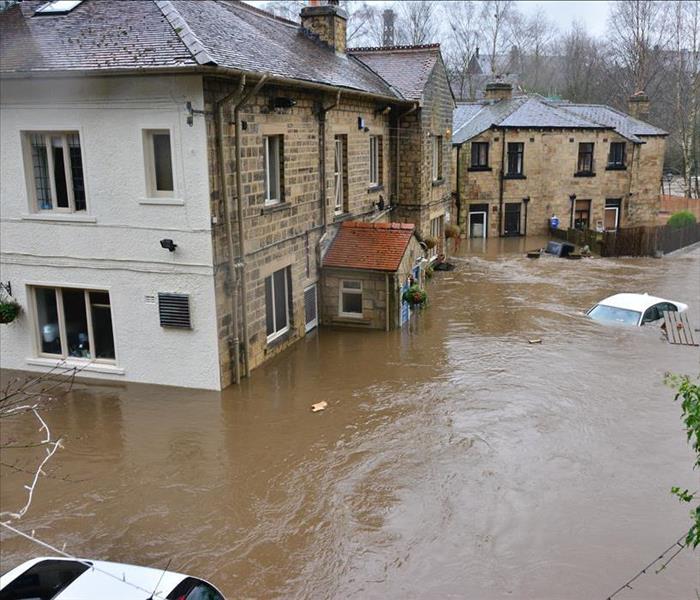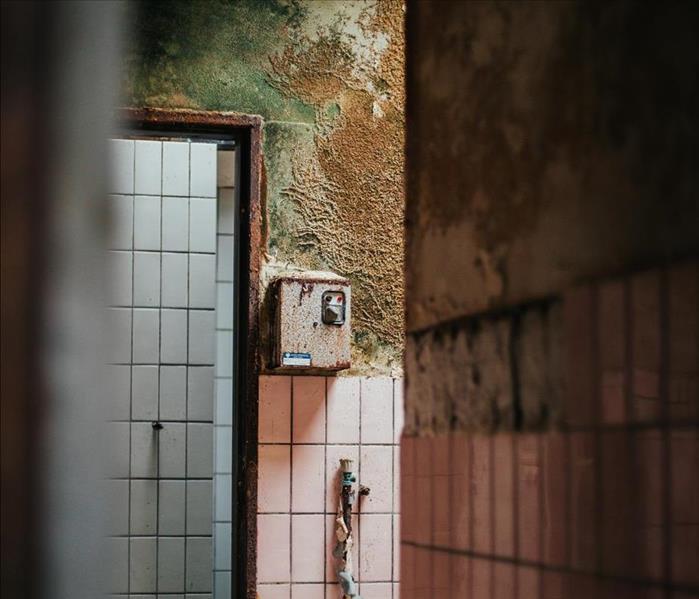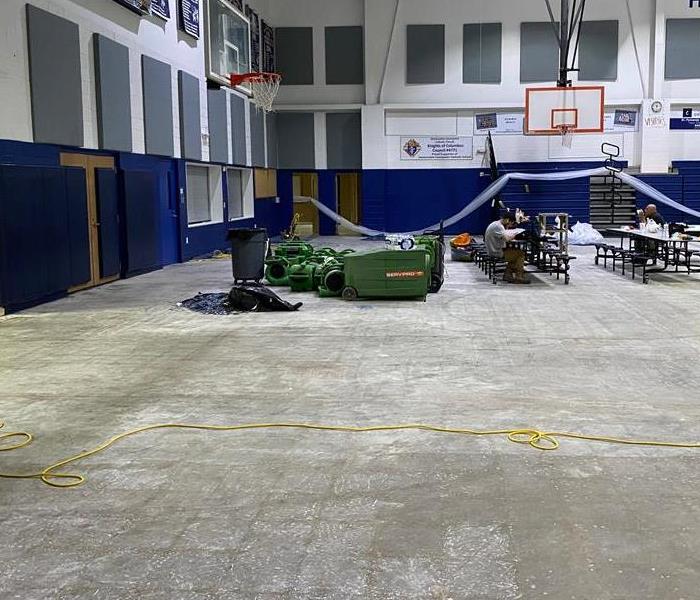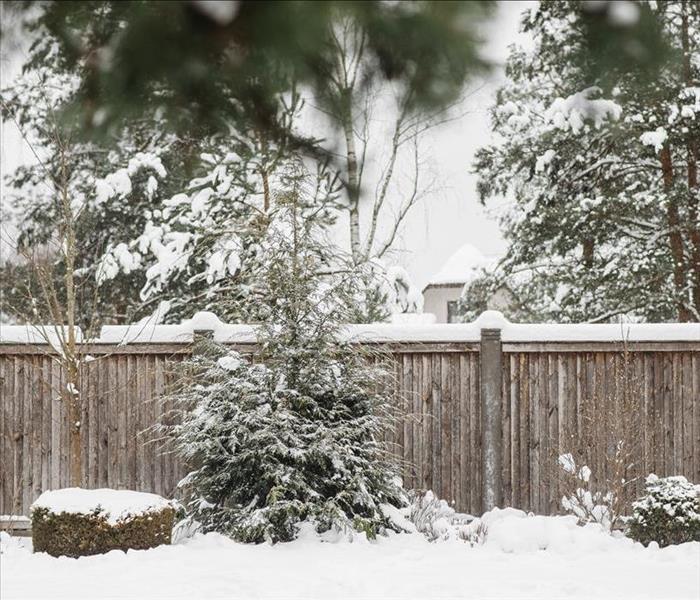Archived Water Damage Blog Posts
Commercial Roofing and Water Damage
11/12/2022 (Permalink)
 Having a clear idea of what to look for on the interior and exterior of your commercial property’s roof can help prevent further water damage.
Having a clear idea of what to look for on the interior and exterior of your commercial property’s roof can help prevent further water damage.
We often say, “out of sight, out of mind,” which directly relates to today’s blog topic: Detecting water damage to commercial roofing. Since our roofs are not something we see on an everyday basis, how can we tell when it has experienced damage? In today’s blog, we’ll share tips for how to spot water damage in commercial roofs. Having a clear idea of what to look for on both the interior and exterior when inspecting your commercial property’s roof can help prevent further water damage. Keep reading to learn more.
Interior Indicators
On the interior of your property, you may see several indicators of water damage to your roof. Leaks and puddles of water are classic signs of water damage. If you see water spots, which are damp areas of discoloration, on the ceiling, this may be a sign of roof damage. Seeing or smelling mold is yet another sign that there could be a leak emanating from your property’s roof.
Exterior Indicators
When inspecting your roof from the outside, it is possible that you might find cracks and tears on the exterior of your property. These are often the result of aging, but water can seep into these small areas of damage, which risks water damage to your property. Puddles of water on your commercial property’s roof may also indicate an issue with your roof’s draining system. It can be easy to ignore this but, if the water doesn’t move, your property will be at risk of roof and water damage. Lastly, if water is visibly leaking into the seams of your roof – this happens when your roof seams loosen – make sure to get the help of a professional right away. Being proactive is crucial in this case, as the faster you take action, the better you can prevent further roof damage.
Call SERVPRO Team Wall with Water and Roof Damage
Learn more about our Commercial Restoration and Building Services by visiting our website or giving us a call at (717) 510-6779 to speak with one of our knowledgeable SERVPRO Team Wall team members. Our website is also the place where you can find more information about our Water and Storm Damage Restoration that we offer for commercial and residential properties alike. Upon your first discovery of damage, don’t wait – call SERVPRO of Harrisburg West. Trust our professional restoration and construction services to make it “Like it never even happened” for your commercial property.
Storm Season Emergency Preparedness with SERVPRO
8/19/2022 (Permalink)
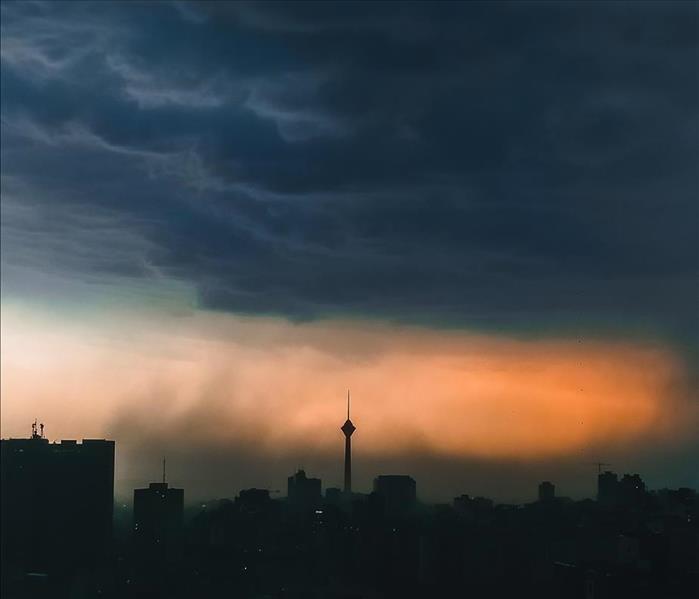 Having an emergency plan in place before the storm is forecasted is beneficial in protecting your home.
Having an emergency plan in place before the storm is forecasted is beneficial in protecting your home.
Next month, September, is National Preparedness Month, which means that it is time to think about your home or business’ protection from mother nature. As we near the end of August, we are in the third month of hurricane season with three more to go, as it extends until November 30th of this year. Thunderstorms and severe weather are more likely this time of year, according to NOAA, due to the heat and humidity of the summer months. Having an emergency plan in place before the storm is forecasted is beneficial in protecting your home, but in the event that your property experiences unexpected damage, SERVPRO Team Wall’s Storm Damage Restoration experts have your back. Continue reading to get better acquainted with SERVPRO Team Wall’s Storm Damage Restoration capabilities and to learn 3 reasons why you can trust SERVPRO to help your property remain prepared for any emergency.
1. We Provide 24/7 Emergency Service
While forecasts provide an estimate, you can never really predict exactly when a storm will reach your property or how much damage it will cause. Bypassing these uncertainties, SERVPRO Team Wall is available to be of assistance to you 24 hours per week, 365 days a year. Count on SERVPRO to always be there for you, no matter the day or time.
2. We’re a Team of Highly Trained Technicians
Our team of professional and experienced storm restoration technicians can help restore your property to its preloss condition. Supporting our exceptional team are our equipment and resources, which help us provide thorough cleanup services and construction services. When working with any damaged home or business, our goal is restoring the property as soon as possible, enabling you to get back on track.
3. We Are #1 in the Storm Damage and Flood Cleanup and Restoration Industry
SERVPRO is a trusted leader in our field, as we are #1 in the storm damage and flood cleanup and restoration industry. After a storm of any kind, large or small, you can always count on us to thoroughly restore your residential or commercial property. We can restore properties after storms of any size, as we have a network of more than 2,000 SERVPRO locations across the country, with whom we can easily cooperate and compile resources in large-loss situations from hospitals to government facilities and universities, no job is too big. SERVPRO is a full-service, which means that in addition to providing water and storm damage restoration services, we also handle construction services. Learn more on our Building Services page.
Have a storm emergency? Pick up the phone and call SERVPRO Team Wall today at (717) 510-6779 or visit our website’s Storm Damage Restoration overview page to learn more information about our Large-Loss/Disaster Recovery Team, Water Restoration Process, and Commercial Storm Damage services.
HVAC Unit Leaking: Why It Happens & What to Do
6/30/2022 (Permalink)
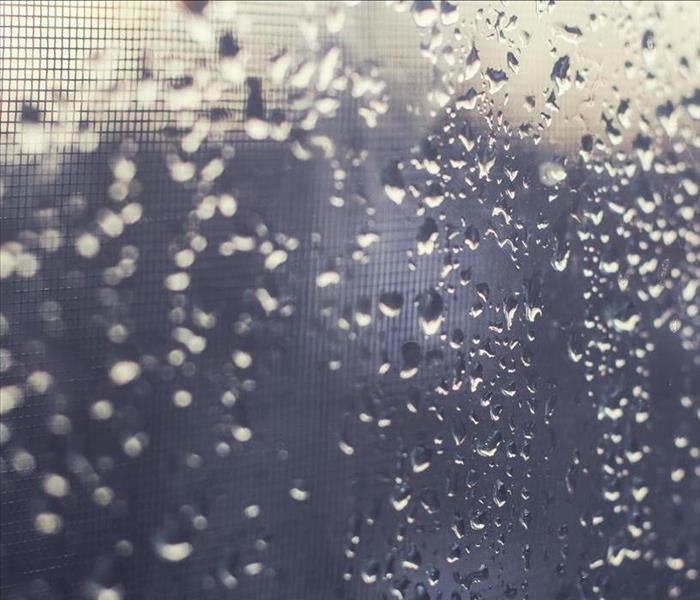 When you notice a leak originating from your HVAC unit, you may have a few questions.
When you notice a leak originating from your HVAC unit, you may have a few questions.
HVAC (Heating, Cooling, and Air Conditioning) units are working overtime in order to combat the summer heat. Homes and businesses alike rely on these units to facilitate the flow and circulation of cool air. When you notice a leak originating from your HVAC unit, you may wonder:
- What is causing my HVAC unit to leak?
- Can I continue using my HVAC while it is leaking?
- What can I do to stop the leak?
All three of these questions will be answered in today’s blog.
What Is Causing My HVAC Unit to Leak?
HVAC leaks can have a variety of causes. Humidity is usually high during the summer months and the excess moisture created by the humidity can overwhelm your drain pan. Debris and mold might clog your drain line, leading to a backup, which prevents water from draining out of your property. The best solution in this situation is to call an HVAC professional for help in unclogging the line. Other potential reasons behind your HVAC leak are a dirty filter and a damaged or broken drain pan or pump.
Can I Keep Using My HVAC Unit?
When your HVAC unit leaks, it won’t completely shut down, which means that you can technically continue using it. However, more damage can be caused to the unit itself and surrounding walls, ceilings, and furniture if it continues working while leaking. Be aware that the water leaking from the unit can also lead to other issues, such as mold growth.
What Can I Do?
To decrease the chances of your HVAC unit leaking, there are several preventative measures that you can take. The first and most important is scheduling inspections and maintenance by an HVAC professional that occur on a regular basis. Another helpful preventative measure, especially during the summer especially, is regulating humidity levels inside of your home or business so that they do not become so high that they cause moisture to accumulate. If, however, you discover a leak originating from your HVAC unit, the most effective solution is to immediately turn off the unit and call a professional.
We Are HVAC Professionals
Here at SERVPRO Team Wall, we are HVAC Cleaning professionals and are ready to help 24/7. At the first sign of an HVAC unit leak, call SERVPRO of Harrisburg West at (717) 510-6779 in order to prevent further water damage and get your HVAC unit functioning properly again in no time. For more information about our HVAC Cleaning services, as well as our residential Water Damage Restoration services, Commercial Water Damage Restoration services, Water Restoration Process, and Water Damage Tips, check out our website. Trust SERVPRO to make it “Like it never even happened” for your home or business.
What You Need to Know About Summer Mold
5/27/2022 (Permalink)
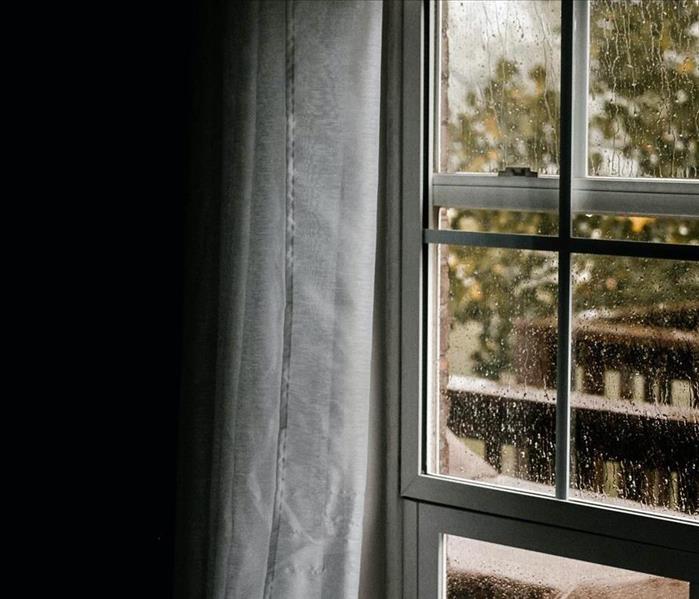 Thriving in warm, moist environments, mold’s prime time for growth is summer.
Thriving in warm, moist environments, mold’s prime time for growth is summer.
With summer just around the corner, it is important to realize that the summer months are a time of year in which mold growth is very likely to occur. Why is this the case? With rising temperatures, humidity increases, causing moisture to accumulate on surfaces. Thriving in warm, moist environments, mold’s prime time for growth is summer. In today’s blog, we’re introducing you to three of the most common types of household molds and sharing with you the ways in which we approach their remediation.
Categories of Mold
Alternaria, Stachybotrys (black mold), and Cladosporium are three different types of mold that are most commonly found in homes. The most common variety of allergenic mold is Alternaria. Showers, bathtubs, leaking sinks, and other water damaged and damp areas within the home are most likely to experience Alternaria growth if preventative measures are not taken. Stachybotrys, which we know by its nickname, “black mold,” is usually black or dark in color and commonly found in damp areas. During the summer, a popular place for stachybotrys growth is the space surrounding ventilation systems if they leak. If you have indoor plants during the summer months, you may see Cladosporium, which can be found on decaying plant surfaces and is usually blue/green to brown or black in color.
How We Care for Mold & Our 5 Principles of Mold Remediation
Our principles and procedures here at SERVPRO closely adhere to those laid out by the Institute of Inspection, Cleaning, and Restoration Certification’s S520 Standard and Reference Guide for Professional Mold Remediation. There are three condition levels for mold remediation outlined by the IICRC, which are: 1) Normal Fungal Ecology, 2) Settled Spores, and 3) Actual Growth. Containment is our primary focus when handling mold because we emphasize preventing the mold from spreading. Negative air chambers, physical barriers, and other advanced technologies are employed to isolate the affected area, preventing mold spores from spreading during the cleanup process. Thorough results are ensured through our 5 principles of mold remediation:
- Safety and Health
- Documentation
- Control Contaminants
- Remove the Contamination
- Correct the Moisture Problem
An Indoor Environmental Professional (IEP) is also contacted to conduct final clearance testing as soon as the moisture problem is corrected.
Call SERVPRO for Mold Remediation Services This Summer
In the event that your residential or commercial property undergoes mold growth this summer, know that SERVPRO has your back. You can learn more about SERVPRO Disaster Recovery Team - Team Wall’s professional mold remediation services by checking out our web pages dedicated to specified topics, including Commercial Mold Remediation and our trusted Mold Remediation Process. You can also call your local SERVPRO Team Wall office, SERVPRO of Harrisburg West at (717) 510-6779. If you experience a mold emergency, let us help make it “Like it never even happened” with our thorough and reliable mold remediation services.
We Do Everything from Restoration to Construction
3/15/2022 (Permalink)
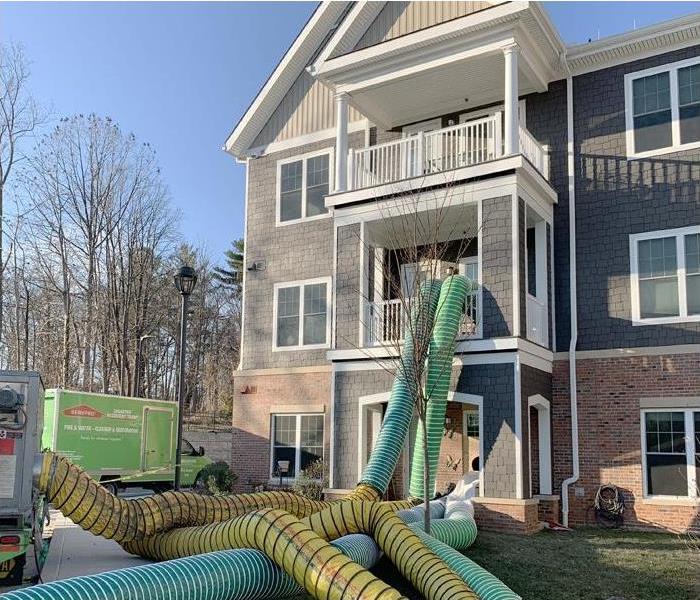 As shown in our work with this senior living center facility, our services can meet your property's restoration and construction needs.
As shown in our work with this senior living center facility, our services can meet your property's restoration and construction needs.
Here at SERVPRO Disaster Recovery Team - Team Wall, we never miss an opportunity to stress the fact that we are capable of handling the entire job from start to finish, as we provide top-of-the-line restoration and construction services alike. In this blog, we’re highlighting a long-term job in which our team has been able to help our customer restore their property to its preloss condition through both Water Damage Restoration and Construction services.
The Details
When the sprinkler system inadvertently went off and flooded all three levels of a full wing of a senior living center’s facility in Baltimore, it was clear that the restoration job was going to be extensive. The customer immediately called us for help and our crew was able to arrive at the job site within two hours, ready to get to work with our professional mitigation and emergency services. Throughout the water damage mitigation process, we also spent time removing and safely storing contents from the affected seniors’ rooms in order to prevent additional water damage. The scope of this project was colossal, evident in the fact that we had anywhere between 40-50 crew members working at any one time throughout the project. In addition to water damage restoration, our work included a wide variety of rebuild services, such as full floor replacement, new carpet installation, new coats of paint for affected walls, and more. This has been a full-fledged reconstruction project, but thanks to our team’s hustle, expertise, and experience, we were able to move some residents back into their rooms within two weeks.
We Do It All
As shown in our work with this senior living center facility, the services that we offer, both emergency and non-emergency, satisfy three categories: Restoration Services, Cleaning Services, and Industry Technology. Our restoration services tend to Water, Fire, Mold, and Storm Damage mitigation, as well as sewage clean up & removal and even Temporary power, heat, & A/C. Biohazard Removal, Carpet Cleaning and Reinstallation, and COVID-19 Virus Disinfection are just three of the many Cleaning Services that we offer here at SERVPRO Team Wall. Lastly, Industry Technology refers to our advanced technological resources, including Docusketch/Matterport, Assured Pack Out, Moisture Mapper/MICA, and Restoration Manager, which all aid in quickly and thoroughly assessing and completing the job according to customers’ unique needs. The moral of the story? SERVPRO has your back until the very end, which means that you don’t need to waste time finding someone else to handle any reconstruction needs that your property may require, saving you time and money.
Call SERVPRO for Advanced Restoration and Reconstruction Services
No job is too big for SERVPRO Disaster Recovery Team - Team Wall. All three of SERVPRO Team Wall’s offices, including SERVPRO of Hunt Valley and Harford County, SERVPRO of Harrisburg West, and SERVPRO of Metro Pittsburgh East, form a partnership that increases our accessibility to equipment and resources. If your property requires restoration and reconstruction services, look no further than SERVPRO. Call us today at (410) 229-0012 to speak with one of our experts. For more information about our Commercial Restoration and Building Services, check out the rest of our website. We look forward to helping our customers make it “Like it never even happened,” after any disaster.
An Overview of the Water Damage Timeline
2/24/2022 (Permalink)
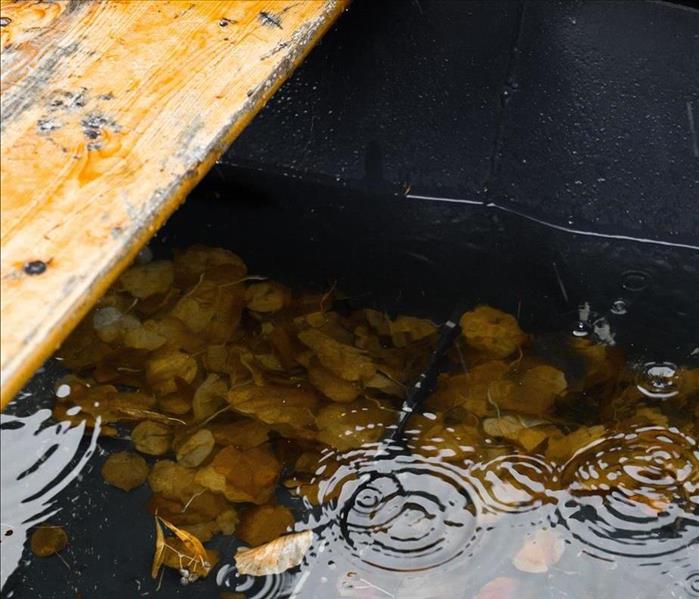 Timing means everything is water damage restoration, as standing water can quickly become invasive and cause destruction.
Timing means everything is water damage restoration, as standing water can quickly become invasive and cause destruction.
Within the restoration industry, the nature of our business requires emergency action, which is usually immediate. One category of our work in which timing means everything is water damage restoration, as standing water can quickly become invasive and cause destruction. SERVPRO Disaster Recovery Team - Team Wall is standing by, always ready to immediately swoop in whenever a customer calls with a water damage concern, but the first thing we need before we hit the road to help protect homes and businesses from irreparable water damage is a call from the customer. In this blog, we’ll investigate the consequences of waiting for extended periods of time before calling a water damage restoration professional through our Water Damage Timeline, an outline that we have created in order to illustrate the damage that properties can sustained in anywhere from a few minutes to several days:
In Minutes
Just minutes after water finds itself inside of your residential or commercial property, the water begins to spread and absorb into floors, walls, ceilings, upholstery, and even furniture. If it becomes absorbed into fabrics, furniture, or carpeting, dyes may begin to bleed, which can lead to staining. Paper objects, such as books and photographs, will also swell and warp in this time frame if affected by water.
1 Hour - 1 Day:
Once the 60-minute threshold is crossed, your property is likely to experience the swelling and eventual breakdown of drywall, as well as the swelling and cracking of furniture or tarnishing of metal surfaces. If carpeting or upholstery became stained in the previous time frame, the stains are likely to sink deeper and spread to other surfaces nearby. There is also a certain musty odor that usually accompanies this stage.
2 Days - 1 Week:
Between 2 and 7 days after water contamination, your property is at increased risk for biohazard contamination that can harm those living in or occupying your property. An example of this is the growth of mold and mildew. You may find mold growing on any wet surface, including furniture and carpeting. Additionally, this is typically the period in which wood flooring experiences swelling and warping, which can cause permanent damage.
After 1 Week
After 7 days have passed, the price of necessary restoration services will likely skyrocket, as much work will need to be done. Some of the damage may be irreparable, which may require the replacement of surfaces such as floors and walls. The structure of the property may also require replacement or extensive repairs, both of which can be costly. Additionally, occupants of the property face alarming dangers at every corner, from insecure structure, mold growth, and potential health effects.
Call SERVPRO Immediately
Time is of the essence when it comes to water damage restoration. The best way to ensure that your residential or commercial property avoids the severe consequences presented in this blog, call your local SERVPRO Disaster Recovery Team - Team Wall office, SERVPRO of Harrisburg West, at (717) 510-6779 at the first sign of water in your home or business. Our water damage restoration experts can be trusted to present quick yet thorough Water Damage Restoration Services tailored to both residential homes and commercial properties. Whether your emergency is a small accumulation of water or a large-scale flood, SERVPRO Team Wall is standing by and can be counted on to make it “Like it never even happened,” for your property. Read more about our favorite Water Damage Tips and our reliable Water Damage Restoration Process by visiting our website.
Do’s and Do Not’s After a Flood
12/28/2021 (Permalink)
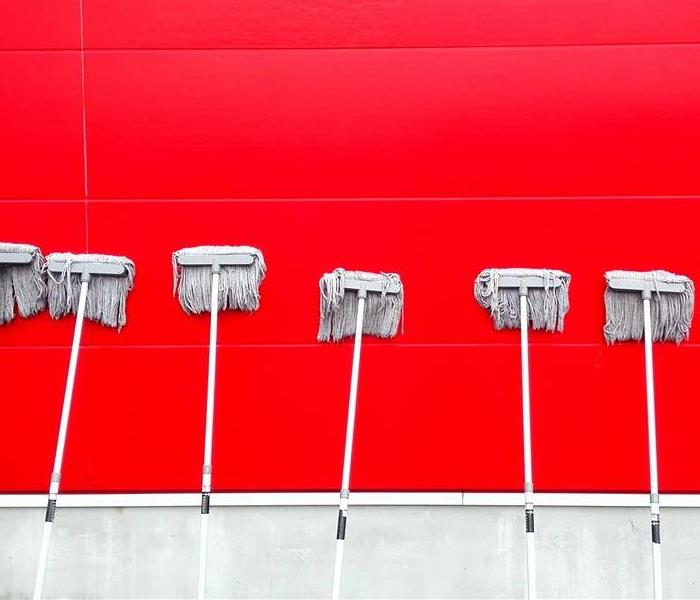 Once you’ve dealt with the initial shock, it is critical to do what you can to limit the amount of water damage that your property will endure.
Once you’ve dealt with the initial shock, it is critical to do what you can to limit the amount of water damage that your property will endure.
No matter the timing or scope of the damage, flooding inside of homes and businesses alike is incredibly stressful. Once you’ve dealt with the initial shock, it is critical to do what you can to limit the amount of water damage that your property will endure. Keep reading for some of our favorite Water Damage Tips for guidance about what you should and shouldn’t do immediately after a flood.
Do’s After a Flood
- Do mop and blog excess water from surfaces
- Do relocate and prop up wet cushions and upholstery to dry
- Do separate furniture from wet carpeting in an effort to prevent water damage with wood blocks or aluminum foil
- Do relocate art objects to a dry, safe place
Do Not’s After a Flood
- Do Not keep items on wet or damp surfaces. Consider hanging them outside to dry instead
- Do Not utilize your personal vacuum to extract water
- Do Not attempt to turn on any appliances powered by electricity, such as your television or other appliances
- Do Not utilize ceiling light fixtures if your ceiling has been exposed to water damage. If the ceiling is sagging in any places, it is best to move to keep out of that room
Call SERVPRO For Immediate Water Damage Restoration
SERVPRO Disaster Recovery Team - Team Wall is always prepared to help you fully recover from water damage. At the first sign of damage, pick up the phone and call your local SERVPRO Team Wall office, SERVPRO of Harrisburg West, at (717) 510-6779 to access our 24-Hour Emergency Services. By visiting our website, you’ll also find more information about the Residential and Commercial Water Damage Restoration services that we offer, as well as more details about how we promise to care for the water-damaged items in your home or business. Here at SERVPRO, we know how stressful flooding can be, so sit back and trust us. We are committed to making it “Like it never even happened” by restoring your home or business to its pre-flood or pre-water loss condition.
3 Benefits of Hiring a Mold Damage Professional
11/5/2021 (Permalink)
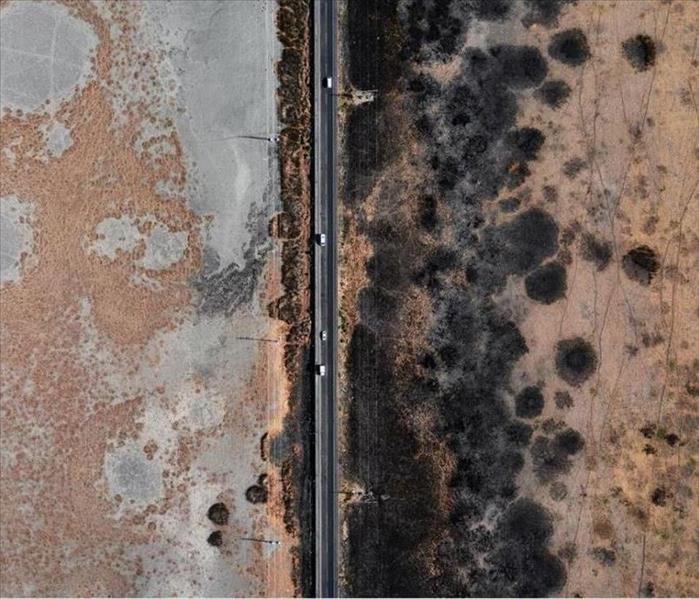 Our team believes that a critical element of our job is preventing future mold growth inside the property.
Our team believes that a critical element of our job is preventing future mold growth inside the property.
Mold is well known for the effects that it poses to human health. When mold grows inside of your home, therefore, the health of those living in your home relies upon how quickly and effectively the mold is removed and completely remediated. Moisture and humidity create the optimal conditions for mold growth and mold often results from water damage. It may appear that taking matters into your own hands as a homeowner when you discover mold growth in your home would be the most efficient means of removing the mold, it is actually more effective to place your home in the hands of a professional. Keep reading to learn more about why you should hire a mold restoration and remediation professional to protect the health and safety of those living in your home during any mold growth scenario.
1) Effective Mold Removal is Difficult and Complicated
Without the proper tools and expertise, attempting to remove mold growth on your own may actually make your home’s mold growth situation more dangerous. Oftentimes, without the help of a mold professional, those living in your home can be exposed to mold, which can cause health effects, and the mold may grow, spreading into other previously unaffected areas of the home. With the assistance of a mold damage professional, you can ensure the safety of your family and make sure that the mold does not spread to other areas.
2) Professionals Can Identify the Source and Cause of the Mold Growth
As soon as a mold damage professional arrives onsite, they can begin assessing the scope and severity of your home’s mold growth due to their comprehensive training and knowledge. Through a mold damage professional’s assessment, two vital pieces of information- the mold growth’s cause and its source- can be identified. The mold professional can then take action to prevent future mold growth in your home.
3) Prevent Future Mold Infestations
Some mold damage cleanup services may stop at mold removal, but our team believes that a critical element of our job is preventing future mold growth inside the property. We will work to safely get rid of your home’s mold growth while taking steps to protect your home from future mold infestations and their harmful consequences.
Trust SERVPRO’s Team of Mold Damage Restoration Professionals
By no means should any mold growth situation ever be taken lightly. No matter how large or small your home’s mold infestation is, our highly-trained team of mold damage remediation and restoration specialists will treat your home with the same level of care. Trust our team’s broad scope of knowledge on the subject of mold removal, top-notch equipment, and thorough training to get the job done when you call SERVPRO of Harrisburg West at (717) 510-6779 in the event that you discover mold growth in your home. On our website, you’ll also find additional information about our Mold Damage Remediation and Restoration Services and blogs such as “Black Mold in Your Shower?”, “The 411 on Mold”, and “Bathroom Mold.” Make your home’s mold damage “Like it never even happened,” by calling SERVPRO today.
Minimizing Water Damage from Flooding
9/16/2021 (Permalink)
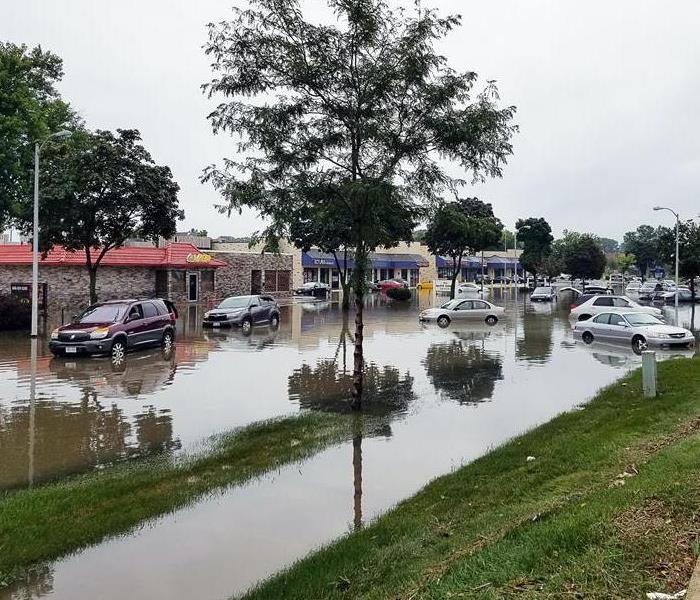 The Federal Emergency Management Association states that flooding “is the most common and costly disaster in the United States.”
The Federal Emergency Management Association states that flooding “is the most common and costly disaster in the United States.”
While flooding can occur any time of year, hurricane season often amplifies the risk of flooding as a result of strong storms. The Federal Emergency Management Association states that flooding “is the most common and costly disaster in the United States.” In order to decrease water damage due to flooding, FEMA recommends taking three distinct steps, “Know Your Risk”, “Insure Your Property”, and “Reduce Your Risk.” Continue reading for a list of helpful tips when it comes to protecting your home or business from flood damage that comply with FEMA’s standards.
Preventative Measures Inside and Outside
Inside and outside of your residential or commercial property, there are steps that you can take to prevent flood damage well in advance or immediately a storm rolls in. Inside, crucial documents and objects can be secured in water-tight containers, placed in elevated locations. In this way, these important items can be kept safe from permanent damage in a flood. Critical equipment and utilities, including your property’s HVAC unit, within your home or business may benefit from being elevated about one foot off of the ground. This step can also be taken outside with outdoor air conditioning units or heat pumps in order to protect them from potentially disastrous flood damage. Finally, the simple act of clearing your gutters of debris on a regular basis can make all the difference in protecting your property from flood damage, as doing so keeps gutters from clogging and gives rainwater a route to drain properly.
Call SERVPRO for Professional Storm Damage Restoration
It is impossible to eliminate the risk of storm damage as a result of flooding, even with preventative measures in place. Nevertheless, taking steps to minimize flood damage, such as those outlined in this blog as well as Ready.gov’s recommendations, can go a long way in preventing irreversible damage. In the event that your residential or commercial property experiences storm damage resulting from a flood this summer, know that SERVPRO of Harrisburg West has your back and is ready to make it “Like it never even happened.” Call us today at (717) 510-6779 for immediate assistance or visit our website for more information about our storm resources, such as our Storm Damage Cleanup and Restoration and Commercial Storm Damage Restoration services, as well as our Water and Storm Damage Tips.
A Breakdown of Our Water Damage Restoration Process
9/9/2021 (Permalink)
 What can you expect from us when you call us after your property experiences a water damage emergency resulting from a storm?
What can you expect from us when you call us after your property experiences a water damage emergency resulting from a storm?
We’re known for our stellar water damage restoration services, but what can you expect from us when you call us after your property experiences a water damage emergency resulting from a storm? We stick to a tried-and-true Water Damage Restoration Process, which we tailor to your home or business’ specific needs. For a detailed breakdown of our process when handling a water damage restoration job, keep reading.
Our 6-Step Water Restoration Process
Your call is what sets our water damage restoration process into motion. During this phone call, you will speak with our experienced team members, who will ask questions and gather helpful information about your unique water damage situation. In this way, we can arrive onsite with the proper tools and equipment that will enable us to get to work as quickly as possible.
- Inspection and Water Damage Assessment
An assessment of your home or business’ water damage is our first task once we arrive. Our experts will assess the contamination level of the water in accordance with the Institute of Inspection, Cleaning, and Restoration Certification’s guidelines. In order to make certain that every affected area of your property receives the attention that it needs, we also measure the distance that the water has traveled within your home or business.
- Water Removal and Extraction
Water extraction is completed with the help of our specialized vacuums and pumps. The growth of mold and mildew, which is common in situations involving lingering water, is prevented through our water removal and extraction step.
- Drying and Dehumidification
After the water removal and extraction step of our procedure, there can be additional, harder to reach water that remains. Therefore, this step aims to remove any remaining water or moisture. Additionally, we ensure that your property is thoroughly dried by determining how many air movers and dehumidifiers will be necessary to get this job done based on levels of humidity and the temperature inside your home or business.
The IICRC lists 3 different categories of water contamination. When items experience water damage, therefore, they can become unsanitary. That is why step 5 in our water damage restoration process focuses on cleaning and sanitizing affected contents and surfaces. Also included in this step is deodorizing affected areas. In order to get the cleaning and sanitizing job done, we offer different types of cleaning, such as Dry Cleaning, Wet Cleaning, Abrasive Cleaning, Immersion Cleaning, and more based on the impacted surface.
Our water damage restoration process concludes with the restoration itself, which involves every final touch needed to get your home or business back to looking and functioning normally after a storm. From large-scale repairs like Rebuild Services to smaller-scale concerns, such as carpet replacement and drywall installation, SERVPRO can handle it all.
Here for You Throughout the Entire Process
Our SERVPRO of Harrisburg West team is prepared to take your property through the entire restoration process from start to finish. After a water damage emergency, our water damage restoration specialists will remediate the damage, but our work doesn’t stop there. We are committed to thoroughly restoring your commercial or residential property to its preloss condition. Learn more about our trusted Water Damage Restoration services, our specific Commercial Water Damage Restoration services, and our Water Damage Tips from professionals on our website.
Hurricane Season: Our Top Tips
8/19/2021 (Permalink)
 Preparing for the worst can be helpful in decreasing the risk of storm and water damage to your property.
Preparing for the worst can be helpful in decreasing the risk of storm and water damage to your property.
As we inch closer to the beginning of September, we still have three more months of hurricane season ahead of us. This year, the Atlantic hurricane season officially ends on November 30th. For residential and commercial properties alike, preparing for hurricane season is frequently a complex process. Like the 2020 hurricane season, NOAA has forecasted another strong hurricane season for 2021 with a 60% chance that it will be an above-average season. Even though NOAA is not predicting that this hurricane season will outperform the 2020 hurricane season, preparing for the worst can be helpful in decreasing the risk of storm and water damage to your property. Keep reading to learn more about reducing the risk of storm damage to your commercial or residential property this hurricane season.
Hurricane Season Preparation Tips
Create a Hurricane Emergency Kit
Emergency kits can effectively prepare homes and businesses for hurricanes. These kits can include a wide variety of items, such as portable cell phone chargers, maps, and flashlights as well as water and food. More items can be found on Ready.gov. It may be beneficial to store emergency kits in multiple locations, including your home, car, and workplace. This ensures that no matter where you are when the storm rolls in, you can take comfort in knowing that you have access to emergency supplies.
Utilize Resources from FEMA
Multiple online hurricane planning resources for homes and businesses can be found on the United States’ Federal Emergency Management Agency, also known as FEMA. One such resource that provides critical information prior to and during a hurricane is the FEMA Mobile App. Updates from the National Weather Service, notifications about disaster recovery centers nearby, and general hurricane safety tips.
Experience Water Damage This Hurricane Season? You Know Who To Call
Hurricanes, like other major weather events, can be stressful, as it is often impossible to predict the scope of any property damage that you may experience. Here at SERVPRO, our team members are highly-skilled and experienced in Storm Damage Restoration and are prepared to help our customers to recover from any type of disaster. SERVPRO of Harrisburg West is also a member of SERVPRO’s Large Loss Disaster Recovery Team, which gives us access to a network of resources across the country. By giving us a call at (717) 510-6779 in the event that your residential or commercial property experiences hurricane damage this season, you can ensure that you will receive expert assistance. For more information about our storm-related services, check out our Commercial Storm Damage Restoration Services, as well as our Water & Storm Damage Tips pages.
Job of the Quarter: Water Loss at Home
7/9/2021 (Permalink)
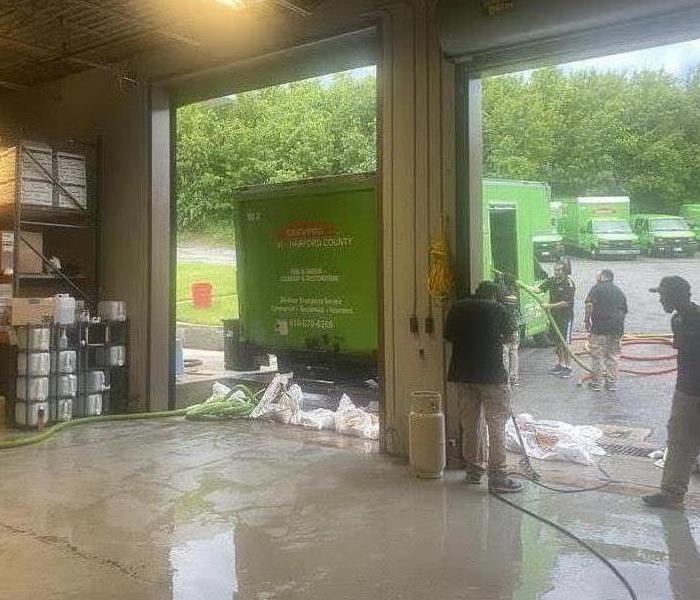 Just 30 minutes after the flood was first discovered, our team began extracting and draining the water.
Just 30 minutes after the flood was first discovered, our team began extracting and draining the water.
The blog that follows is an excerpt from our upcoming quarterly newsletter:
In previous “Job of the Quarter” articles featured in our quarterly newsletter and on our blog, we have highlighted jobs that send our teams traveling across the country, serving communities both near and far. The job that we have selected this quarter differs in that no travel was required, as it occurred on our own turf- inside of the warehouse, offices, and hallways of our Hunt Valley and Harford County headquarters.
Thursday, June 3rd brought a line of strong storms through the Baltimore area that wreaked havoc throughout the evening. With an inundation of calls coming in from members of the community dealing with storm and water damage, our office manager, Tracy Summers, was working late in the office. Water Crew Technician Brian Rhodes was about to head home after a long day when they first discovered rainwater flooding into our warehouse’s closed bay doors. With the rain falling at the rate of almost 4 inches per hour, they had to act fast. Tracy and Brian quickly called crew members in to help remove the water. With their help, we were able to avoid an even larger disaster.
Because there was approximately 1 inch of water covering the floor of the warehouse and the water had also spread to our main conference room, hallway, and individual offices, it was an all-hands-on-deck effort. Additionally, the water involved fell under the Institute of Inspection, Cleaning and Restoration’s most contaminated classification of water, known as Category 3. Often containing “harmful pathogens” and risking human health, the Category 3 water posed additional challenges, as our crew had to take the necessary precautions to safely yet efficiently remediate the affected areas.
Around 5:30 PM, just 30 minutes after the flood was first discovered, our team began extracting and draining the water. Once the water was removed, walls were cut, wet insulation was removed, and drying equipment was put in place by 10 PM thanks to the help of approximately 20 crew members, who put in extra hours to get the job done. In order to install new drywall and complete paint work, a handful of our rebuild team members also took part. The entire project was completed by the following Tuesday and you never would have been able to tell that our offices had experienced water damage.
With every job, we strive to restore normalcy in our customers’ lives in a timely manner and make it “Like it never even happened.” In the case of this job, however, we faced a potential disruption to our business, as we were dealing with water damage on our home turf while calls were flooding in from community members. This job is worthy of our coveted “Job of the Quarter” title because of our team’s perseverance and selflessness in their decision to return to the office at night after a long day in order to help us recover from a water damage emergency and get back to helping members of our community. The job demanded quick removal and repacking of wet contents in order to keep our office afloat as we answered a slew of calls from customers as a result of the storm. Two of our pillars here at SERVPRO Disaster Recovery Team- Team Wall, Team and Persistence, ultimately came to the rescue.
Before we can resolve emergencies for our customers, it is imperative that we can effectively combat an issue at home. This quarter’s “Job of the Quarter '' proved that we can overcome any challenge, such as juggling an inundation of phone calls while dealing with a flood in our own office, and still have our customers’ backs. Emergencies of any kind can disrupt business schedules and turn lives upside-down, which are circumstances that we have experienced firsthand. By calling SERVPRO of Harrisburg West at (717) 510-6779 at the first sight of damage, you will speak with people who understand the necessity of arriving on site immediately and making any disaster “Like it never even happened.” Trust our Water Damage Restoration and Storm Damage Restoration professionals at SERVPRO to restore normalcy to your residential or commercial property whenever you are in need of our services.
Understanding the IICRC's 3 Categories of Water
6/16/2021 (Permalink)
What comes to mind when you think of water damage? Chances are, your idea is only one variety of the many different situations that can be described by the label “water damage.” From flooding after a storm to a toilet bowl overflow, everything about the incident, right down to the classification of the water itself, is unique. The water involved in water damage situations can be broken down into three distinct categories, according to the Institute of Inspection, Cleaning, and Restoration Certification. These water categories in water damage situations can be found inside of homes or commercial businesses, which emphasizes the importance of both homeowners and business owners’ understanding of such categories. Keep reading to learn more about the three “Categories of Water” outlined by the IICRC, which will help you to gain a better understanding of the severity and implications of water damage for your home or business, should such a situation ever occur.
The IICRC’s 3 Categories of Water
In their document, “S500 Standard for Professional Water Damage Restoration”, the IICRC categorizes water into three groups based on the water’s level of contamination, as they consider “both its originating source and quality after it contacts materials present on the job site.” The IICRC also asserts that time and temperature can both affect contamination level, which means that water is capable of changing categories.
Category 1- Clean Water
The kind of water that falls under Category 1, according to the IICRC, is “clean water,” which originates from a sanitary source. Therefore, exposure to Category 1 water does not pose a threat to human health. Examples of Category 1 water range from broken water supply lines to uncontaminated rainwater and melted snow or ice. It must be reiterated that Category 1 water can deteriorate in sanitation level to Category 2 based on its exposure to time and temperature. In the event that “clean water” begins to develop an odor, it may indicate that it has become contaminated.
Category 2- Gray Water
Significant contamination is characteristic of Category 2 water. As a result, exposure to or consumption of Category 2 water can lead to discomfort or illness in humans. Discharge and overflows from household appliances, including dishwashers, washing machines, and toilets, often fall under this category. Several unexpected situations, such as broken aquariums and water beds that have been punctured, can also be classified as Category 2. With increased contamination, “gray water” can quickly decline in quality and become “black water.”
Category 3- Black Water
Based on the IICRC’s standards, Category 3 water possesses the greatest amount of contamination. Commonly referred to as “black water,” this variety of water often contains “harmful agents” such as pathogens and toxins, which can lead to health risks if humans consume or come into contact with Category 3 water. Rain from hurricanes and tropical storms, river and seawater runoff, and sewage are all examples of Category 3 water. Water damage professionals should be called to handle Category 3 water situations due to its health risks.
We Have the Expertise That You Need
Fully trained through SERVPRO Industries Inc., which is IICRC-approved, our water damage restoration experts at SERVPRO of Harrisburg West are ready to help your home or business recover from water damage of any kind. Adhering to the IICRC’s S500 Standards, our services are tailored to your unique needs in accordance with the three “Categories of Water.” Our team of professionals will arrive as soon as all you call us at (717) 510-6779 at the first sight of water damage. In addition to our reputable Water Damage Restoration Services, check out our Water Brochure, which further details the steps that we take to restore water damage and the water damage restoration services that we provide, including specialized services like Sewage Cleanup. In the event that your home or commercial business experiences water damage that falls under any of the IICRC’s categories, you can count on SERVPRO to make it “Like it never even happened.”
The 411 on Mold
5/28/2021 (Permalink)
In both homes and businesses, mold is a common concern. Therefore, understanding how and why mold grows, as well as how it can be prevented, is crucial to protecting against the harmful consequences of mold growth. What can SERVPRO do to help? Keep reading to learn more about our mold remediation process and services.
The Biology of Mold
Saprophyte, a type of fungus, is the scientific classification of mold. Scientists have concluded that they are unsure as to exactly how many species of mold are out there, but we do know that there are at least 20,000. Mold grows on a variety of surfaces and obtains nutrients by feeding on decomposed organic matter. Branches of mold, called hyphae, facilitate mold’s spread.
Common Types of Mold in Buildings
In buildings such as commercial businesses, five mold varieties are common. First, there is penicillium, a type of mold that is usually blue-ish green in color and its texture resembles that of velvet. Second, aspergillus often grows in environments rich with oxygen. Third is chaetomium, a variety whose texture is cotton-like. A fourth variety, cladosporium, commonly grows on fabric surfaces. Lastly, stachybotrys is most common in humid and damp areas of buildings.
Containing the Spread of Spores
Because there has always been mold on surfaces and in the air, there’s no such thing as completely eradicating mold. The objective of mold remediation, therefore, is to contain the spread of mold and in effect avoid severe situations of mold infestation. Beginning as just tiny spores, mold can eventually hold thousands of spores due to its structure. The process of air blowing mold spores, known as aerosolization, opens the door to the possibility for mold to spread. Containing mold, therefore, is key in preventing mold from spreading to other previously unaffected areas of the home or business. In order to achieve this, our SERVPRO team puts advanced containment materials and resources, including negative air chambers that create physical barriers, into place.
Why Should We Be So Worried About Mold?
Health Effects
There are certain types of mold, including those that make Penicillin or bleu cheese, that do not negatively affect the body. All the while, there are many other types of mold that can be harmful, as they contain mycotoxins.
In addition to health effects, buildings and homes can also unknowingly suffer from mold growth, as mold is often invisible to the eye until it grows into dangerous colonies. As a result, it can be difficult to tell whether or not items in your home or business have been subject to mold contamination.
Mold in Buildings
“Sick building syndrome” (SBS), which involves a building’s occupants complaining of minor health effects that cannot be explained by any other factors, is common when mold grows in buildings. If air circulation or maintenance are lacking, these health effects can persist. A common catalyst of mold growth in buildings is the HVAC system, as filters, drain pans, and piping that are not working properly can facilitate the spread of mold. Because HVAC systems circulate air throughout buildings, any mold growth inside of the unit can be easily delivered throughout the building, resulting in a wide-spread mold problem. You can read more about SERVPRO’s mold remediation services for commercial buildings here.
Mold Growth Requirements
Mold cannot thrive without the presence of the following factors: Mold spores, a food source of organic matter, a climate with a temperature of 32 to 122 degrees fahrenheit, moisture or water, and just 48 hours of time. Mold can feed on many different types of organic matter, including paints, insulation, wood, drywall, paper, caulk, and the starch in wallpaper paste.
Preventing Mold Growth
Getting moisture levels under control is key in preventing mold growth after your home or business has experienced water damage. Additionally, mitigating mold-infected areas has more benefits than remediation. The owners and occupants of businesses and homes can take several different steps in order to avoid mold growth. First and foremost, be sure to inspect areas that tend to be overlooked, including space behind dishwashers, ice maker connections, shower doors, and washing machine connections. It is important to note that it is a good idea to replace washing machine connections on a five-year basis. Above all else, taking preventative measures, such as maintaining sufficient ventilation, limiting moisture, decreasing food sources for mold, and putting fungicides and biocides to use, is helpful when seeking to prevent mold growth.
Mold Remediation Basics
Our mold remediation services adhere to the Institute of Inspection, Cleaning, and Restoration Certification’s S520 Standards and Professional Mold Remediation Reference Guide. Mold remediation follows three condition levels: Normal Fungal Ecology, Settled Spores, and Actual Growth. In a Normal Fungal Ecology, mold spores or traces of mold growth may be present in an indoor environment. Condition 2, Settled Spores, occurs when indoor areas have become secondarily contaminated with settled mold spores. When an indoor environment becomes contaminated with mold growth, the area meets the requirements for Condition 3, Actual Growth.
Our 5 Principles of Mold Remediation
Here at SERVPRO, our focus is on mold containment and preventing the spread of mold. We utilize tools such as negative air chambers in order to contain areas of mold growth with negative air pressure and physical barriers while we clean.
When combating mold growth, our team focuses on 5 mold remediation principles, which include
- Safety and Health,
- Documentation,
- Control Containments,
- Remove the Contamination,
- and Correct the Moisture Problem, respectively.
In order to make certain that our work has efficiently contained the mold issue, our team brings in an Indoor Environmental Professional (IEP) to perform a final clearance test. In this test, areas that were previously labeled as Condition 3 or Condition 2 are tested against the IICRC S250 Standards, making sure that they have returned to Condition 1. It is only after the affected area meets Condition 1 standards that we remove our containment devices. To learn more about our mold remediation protocol, check out our Mold Restoration Process.
Have a Mold Problem? Call SERVPRO
Visit our website in order to learn more about SERVPRO’s Mold Remediation and Restoration Services. If you discover mold growth of any size in your home or commercial business, be sure to call SERVPRO of Harrisburg West immediately at (717) 510-6779. By calling SERVPRO, you can be sure that your home or business will receive professional and dependable mold services.
Winter Storm Recap: Winter Storm Uri
4/14/2021 (Permalink)
After the long drive across the country, our crew went face-to-face with the aftermath of February’s Winter Storm Uri. Keep reading to read our team members’ testimonials about their proudest moments of the Winter Storm Uri projects.
“We were grateful for the opportunity to travel to Oklahoma and Texas in order to aid businesses, local franchises, and residents after they had endured damage from Winter Storm Uri. All three of our Team Wall offices took part in the storm restoration process. To me, the thing that most stands out is the cooperation and teamwork between our team members and those from other offices. Even thousands of miles from home, it was easy to recognize our One Team mindset. Everyone worked hard in order to restore the lives of the inhabitants of homes and business owners. Our traveling teams, who participated and provided support, as well as our team at home, working to assist businesses locally, both played a critical role in the success of our work. The pride I feel for our team cannot be properly expressed.”
- Jim Wall, Owner
“Even though every storm is different, it is always good to be out helping people. Because these storms leave homes and businesses backed up, it is very meaningful to us to be able to help.”
- Vinny Matthews, Resource Coordinator
“At the end of the day, we are satisfied that our clients express happiness and contentment with the work that we do, which makes it all worth it on our end. The SERVPRO brand is amazing in that we are supported from every angle. As a united front, our team bands together in order to assist our clients during the hardest time.”
- Brian Barry, Fire Production Manager
Opportunities to give back to the community, both near and far, and restore normalcy in our clients’ lives after enduring a disaster are always gratifying. Count on SERVPRO of Harrisburg West to remediate your home or business’ storm, fire, water, or mold emergency and make it “Like it never even happened.” By picking up the phone and calling us at (717) 510-6779, you will have our renowned Storm Damage Restoration Services, Commercial Storm Damage Restoration Services, and trusted Building Services on your side. Allow us to handle both the remediation and rebuild processes, having your back throughout the entire job, start to finish.
Black Mold in Your Shower? Here's What to Know
2/24/2021 (Permalink)
During a nice, relaxing shower after a long day, mold growth is certainly not something that you ever want to discover staring back at you. Unfortunately, showers and other areas of bathrooms are prime locations for mold growth, as mold thrives in environments that are damp or humid. Perhaps you’ve heard of the ominous black mold, rumored to be toxic and a major threat to the health of anyone who crosses its path. Two questions may come to mind: Is black mold as dangerous as it’s rumored to be? What should I do if I find black mold growing in my shower?
What is Black Mold?
Our page “Black Mold, What is It?” describes black mold in detail, but the following paragraph will give you a brief overview:
“Stachybotrys chartarum”, better known as black mold, is a type of mold with a black or dark green hue. It has been found that black mold dispenses toxic substances called mycotoxins that can lead to health effects. According to Medical News Today, there has not yet been evidence to prove that these symptoms are the direct result of mold spore inhalation. It is widely understood, however, that numerous types of mold bring about irritations and aggravate allergies. In order to best keep everyone in your home safe, it is important that you decrease exposure to mold growth of any kind and get help immediately. It may seem more effective to attempt to clean or get rid of mold yourself, but this can actually be counterproductive since coming into contact with mold of any kind can make the situation more dangerous. SERVPRO of Harrisburg West possesses the specialized equipment and training needed for the treatment of black mold and combatting a mold infestation of any size or variety. Immediately after discovering mold growth in your shower, pick up the phone and call us at (717) 510-6779.
Black Mold Infestation in Your Shower
So what if the mold that you’ve discovered in your shower is, in fact, black mold? You can often deduce that it’s black mold based on its color and texture. Black mold is typically black or dark green in color and appears slimy. Where does black mold grow? Does it make sense that it could be in your shower? The answer is yes. Because black mold requires the same conditions as other types of mold to grow and thrive, your moist and humid shower is susceptible to the growth of black mold. If you believe that the mold in your shower is black mold, or any other variety of mold, don’t hesitate. Call us immediately.
Preventing Black Mold Growth
To avoid the growth of black mold in your shower, you can take the following steps: First, increase ventilation and keep air moving in your bathroom by opening a window if one is available or turning on a fan while showering. Both of these actions are beneficial in decreasing moisture and humidity levels in your bathroom, making it more difficult for mold to grow. After a shower, you can utilize a squeegee or simply dry the walls of your shower in order to reduce the amount of lingering moisture. Another catalyst of mold growth of any kind in showers is leaking pipes. Therefore, keep a lookout for leaks in your bathroom and quickly dry any that you find. In order to prevent black mold growth, broken bathroom pipes must be repaired as soon as possible.
Don’t Waste Time: Call SERVPRO Immediately
Through the years, we’ve seen many different kinds of mold infestations and understand how pertinent it is that any kind of mold issue is remediated immediately. We’re committed to getting to you quickly and beginning our mold remediation process without delay. Here at SERVPRO of Harrisburg West, we have the tools and resources necessary for the level of mold and water remediation services that your home needs. All you have to do is pick up the phone and call us at (717) 510-6779 for professional black mold removal and mold remediation services that will make your mold infestation “Like it never even happened.” For more of our mold resources, be sure to take a look at our Mold Remediation Process and Overview of Mold Services.
How to Deal With a Polar Vortex
2/2/2021 (Permalink)
If you or I ever hear the term “polar vortex”, it means we are going to need to add a jumper or two to the list. The Polar Vortex is a region of cold air that gravitates towards the earth's poles. According to the National Weather Service, this zone will block jet streams and bring unseasonably cold weather. We were lucky enough to witness the plane Polar Vortex when our Arctic air took a trip south during the winter through the jet stream, falling in our own slice of Arctic air. It causes such cold conditions that are almost intolerable. It may come as a surprise to know that our homes and businesses, too, will suffer from the cold. As we need to dress warm and wear hats, we need to protect our homes and businesses the same way.
Effects of the Polar Vortex
Our homes and workplaces can be destroyed due to frozen pipes and ice jams during the “polar vortex” of the winter. It is now freezing cold in the Arctic, temperatures in the Arctic can cause the water in the pipes to ice and swell, which can cause the pipe to break. In the attic, as snow and ice mix and pile up, a "ridge" of ice will form and prevent the melting snow from leaving the roof. This is called "Ice Damming" which allows water and ice to spill down through the roof and into the house.
How to Prepare
- Clean snow off of the roof as soon as possible. Be sure to remove any lingering snow or ice from a previous storm off the roof first.
- Be sure that your attic or top floor is properly insulated before a storm. If your amount of insulation is lacking, adding extra insulation may be helpful.
- Before a storm, be sure that all pipes are insulated and any cracks are sealed.
- When temperatures drop, let your faucets drip in order to keep water flowing.
- Maintain consistent, warm temperatures inside of your home or business. Additionally, make certain that your insulation is sufficient throughout the home or building
How We Care For Your Water Damaged Products
12/23/2020 (Permalink)
The Merriam-Webster Dictionary defines “home” as “one’s place of residence”, but here at SERVPRO, we know that it’s much more than that. Beyond being the place in which you live, your home is also the foundation that holds your personal belongings. These items are what transform your house into your home. In the event that your house sustains water damage, both its physical foundation and its contents are put at risk for significant damage, as water can impose serious damage on the furniture, photographs, or other types of belongings that you adore. At SERVPRO, we are committed to handling your home and personal belongings with care and we strive to restore the contents of your home rather than replacing them.
Because SERVPRO offers a wide variety of contents restoration services, we have a service that will meet your needs, no matter the nature of the water damage that has affected your home. Keep reading in order to gain a deeper understanding of our commitment to handling the contents of your home with care after any devastating water emergency.
Contents Restoration
We offer 7 different options for restoration services, depending on your unique situation and the kind of water damage that the contents have sustained. For cases in which there is only light residue, dry cleaning may be utilized. Conversely, if there is moderate to heavy residue, wet cleaning may be necessary. If wet cleaning is not appropriate for some contents, we may utilize spray and wipe or, for fabric items, foam cleaning. Finally, we may utilize immersion cleaning or abrasive cleaning, contingent on the type of items affected.
Move-Out and Pack-Out
If your home requires cleaning services that are substantial for water-damaged contents, a move-out of the affected area may be beneficial. Protecting your belongings from additional damage, a move-out often proves to facilitate the restoration process. We also offer move-in day services, but be sure to check with your insurance in order to understand which services will be available to you.
Electronic Cleanup
Electronic devices can be the most dangerous of all belongings if they come into contact with water. It is imperative that you do not attempt to power on or utilize any electronic devices in the event that they have sustained water damage, as water and electronics make for a dangerous and sometimes deadly combination. Whether it be a T.V., computer, DVD player, or another kind of electronic device, our specialists will focus on professionally cleaning the exterior in an effort to protect the interior of each electronic device. Lastly, an experienced electronics technician will inspect all electronics after they’ve been cleaned in order to ensure your safety.
Document and Photograph Drying
Photographs and other types of documents are especially at risk for serious damage in the event that they come into contact with water, as even the smallest drop of liquid can result in important information or images becoming smudged, unrecognizable, or ruined. Therefore, we are devoted to drying contents and preventing the possibility of the item sustaining additional water damage to the best of our ability, even if we are not able to restore the item to its preloss condition. No matter the type of contents in need of drying, one of the five drying services that we offer will fit your needs. From air drying, dehumidifier, or freezer drying to vacuum freeze drying and vacuum thermal drying, we have a drying service that will work for you.
Contents Claim Inventory Service (CCIS)
We know how stressful a water damage emergency in your home can be, which is why we offer our Contents Claim Inventory Service, or CCIS for short. The CCIS is a tool that can help limit your feelings of stress by making a detailed list of your belongings. This list will include each item in every room of your home with details concerning any water damage that it has sustained in addition to its value before the water loss. In conjunction with photos and barcoding, the CCIS will form a detailed picture of the contents of your home and, above all, it will restore your peace of mind during a tumultuous time.
Need More Information?
If the contents of your home have endured water damage and are in need of our services, don’t wait. Call SERVPRO of Harrisburg West immediately at (717) 510-6779. You can also find answers to any questions that you may have concerning the ways in which we care for your personal belongings after a water emergency here. Additionally, you can learn more about our water damage restoration services and process by clicking here. We know that the contents of your home hold a tremendous amount of value to you and your family and are the items that make your house your home. As a result, we are committed to working tirelessly to restore your damaged belongings to their previous condition, handling them with the utmost care every step of the way.
Causes of Sump Pump Failure
9/14/2020 (Permalink)
“Causes of Sump Pump Failure”
You can usually find sump pumps in commercial buildings’ basements, working to drain water from the basement and pump it out, away from the building. Sump pumps play a critical role in protecting buildings from flooding and water damage. This is why a sump pump failure can be devastating and lead to a costly cleanup. In order to prevent a sump pump failure in your commercial building, it is important to first gain an understanding of why sump pumps fail.
Causes
Old Age
First, consider the age of your building’s sump pump. One of the most common reasons for sump pump failure is that the unit is old. After 7-10 years, sump pump failure is inevitable. Therefore, it is paramount that sump pumps be replaced when they begin to show signs of wear and tear in order to avoid disaster.
Power Outage
During these stormy summer months and hurricane season, a common reason as to why sump pumps fail is a power outage. Rain water from storms alone can overwhelm sump pumps, but major problems can occur if the storm causes a power outage, as it will prevent the sump pump from being able to do its job. In order to prevent your building’s basement from flooding during a power outage, be sure to hook your sump pump up to a backup generator.
Infrequent Maintenance
Finally, sump pumps can fail if they are not receiving regular maintenance. To avoid a failure due to infrequent maintenance, make sure that you run a vinegar solution through the unit and check that its vents are functioning properly.
Sump Pump Failure? Call SERVPRO
In the event that your commercial building experiences water damage due to a sump pump failure, look no further than SERVPRO. We are experts in commercial water damage and have years of experience in our tool belt to provide you with effective restoration services unique to your building. We’ll also protect your building from the growth of mold and mildew through our advanced drying techniques. Read an overview of our water damage services by clicking here. Call SERVPRO of Harrisburg West today at (717) 510-6779 to schedule a consultation.
Top 3 Source of Water Damage in Your Kitchen
9/1/2020 (Permalink)
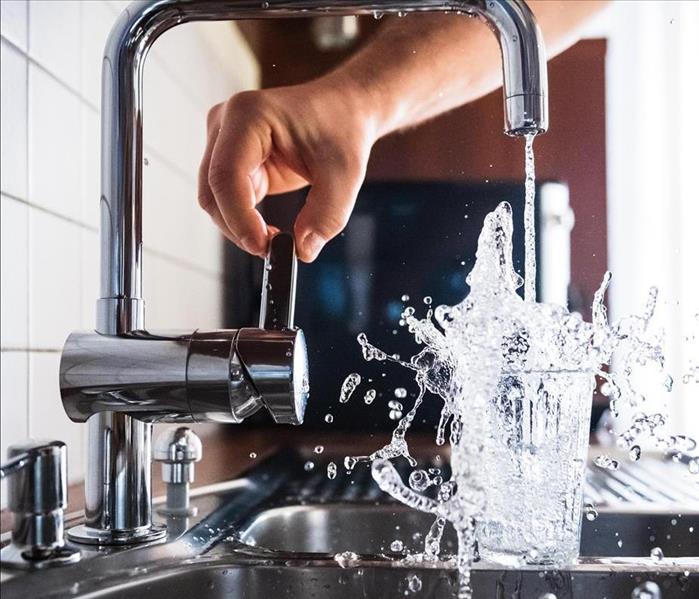 The effects of water damage on your home can be devastating and costly.
The effects of water damage on your home can be devastating and costly.
We’re in our kitchens every day, cooking meals, washing dishes, and so much more. These activities involve significant quantities of water, so it makes sense that kitchens are notorious for experiencing water damage. Several areas of the kitchen can be problematic in terms of water leakage and in order to protect your kitchen from water damage, it is important to know the locations of common problem spots. Keep reading to learn about 3 of the most common water damage sources in the kitchen.
Whether it’s washing the dishes, handwashing, or filling up a cup of water to drink, sinks use a lot of water. Sinks leak due to a variety of complications, including corrosion of sink parts and leaks in the drain or faucet. The best way to prevent water damage stemming from the sink is to check the sink’s piping for corroded parts and leaks every 6 months.
Dishwashers require a tremendous amount of water in order to wash cups, plates, and silverware on a daily basis. The large quantity of water required by the dishwasher combined with its frequent usage makes for greater chances that the dishwasher will leak. When dishwashers leak, it may be the result of the wrong type of detergent being used, the unit overfilling with water, or a bent dishwasher door latch. To protect your kitchen from water damage due to a dishwasher leak, keep an eye out for pools of water beneath the dishwasher.
- The Refrigerator and Ice Maker
There’s nothing better on a summer day than a refreshing glass of your favorite beverage, made cool with the help of a little refrigeration and ice. However, the refrigerator and ice maker can make for a mess of water damage, as they’re prone to breaking down and causing leaks. Ice maker leaks can be the result of a wide array of problems, with the two most common being worn-out or damaged parts as well as improper installation. Keep an eye out for water accumulating on the floor underneath the fridge and ice maker, which is usually evidence that a leak has sprung. Additionally, it is beneficial to have refrigerators and ice makers inspected and maintenanced regularly to prevent unexpected leaks.
The effects of water damage on your home can be devastating and costly, risking structural damage and destruction of surfaces and appliances, as well as mold and mildew growth. If you have experienced water damage in your kitchen, remember that SERVPRO is standing by, ready to help. Here at SERVPRO of Harrisburg West, our water damage specialists have years of experience with kitchen water damage and will know what to do to restore your kitchen. Learn more about our water damage services here and call us today at (717) 510-6779 for a quick and thorough restoration.
Dealing With Toilet Overflow
8/7/2020 (Permalink)
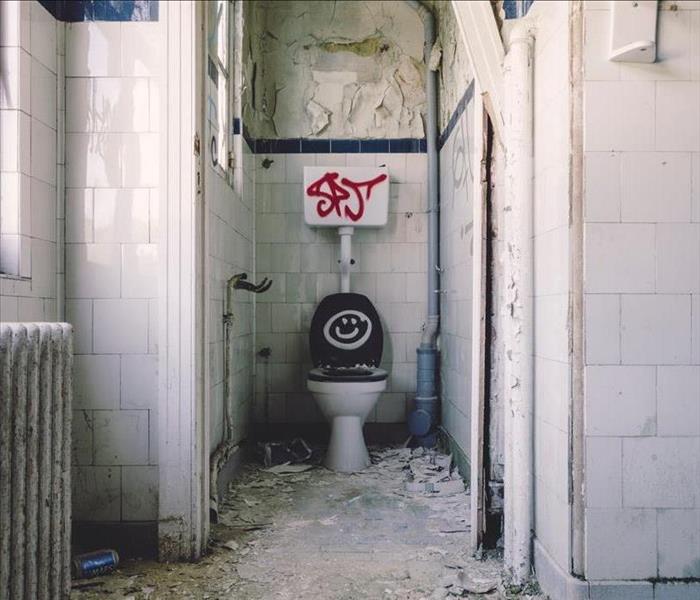 Sometimes, it is possible to resolve a toilet overflow on your own if you catch it right away and know for a fact that it hasn’t caused water damage.
Sometimes, it is possible to resolve a toilet overflow on your own if you catch it right away and know for a fact that it hasn’t caused water damage.
There’s nothing worse than realizing that your toilet has overflowed, leaving water spread across your bathroom floor, risking serious water damage. Water resulting from a toilet overflow can inflict damage on bathroom floors and potentially leak into the ceiling below, creating an ever more serious issue. Toilet overflows can be messy, unpleasant, and potentially costly, which makes it important to do everything in your power to prevent them from happening. To understand common causes of toilet overflows, prevent them from happening, and know how to clean up, continue reading.
What Causes a Toilet Overflow?
Toilet overflows can be the result of many different complications. Three common causes are sewage complications, a clogged drain, and a blocked vent.
A full septic tank or a clogged sewer line are two sewage complications that can be the root cause of a toilet overflow. If your home has a septic tank, it works to release excess water into the ground. If your tank is full, the water will travel back into the house, risking an overflow. Additionally, if a sewer line becomes blocked, whether it be by tree roots and debris or sanitary wipes, flooding can occur in addition to a toilet overflow.
When the toilet drain becomes clogged or blocked, which can occur frequently, the toilet cannot flush properly and may overflow. Usually, using a plunger to unclog the toilet works to resolve the issue.
Lastly, the vent pipe works to pump external air, which is used every time you flush the toilet. A blocked vent pipe restricts proper flushing, therefore risking an overflow. A professional, experienced plumber is usually needed in order to relieve the problem.
How to Clean Up
Upon seeing a toilet overflow, your initial reaction may consist of wincing and exclaiming “oh no!” Immediately after coming to terms with what happened, the first thing that you should do is turn off the water and stop the flow of water from the toilet. Next, remove any standing water on your bathroom surfaces as quickly as possible using a mop, wet vacuum, or towels. Regardless of the method you choose, time is of the essence because the longer water sits on surfaces, the more serious damage it may cause. Once all standing water is removed, it is important to use a high-powered fan to dry out the area in order to prevent mold and mildew growth. Lastly, be sure to disinfect and clean both the affected surfaces and any areas nearby.
We’re Water Damage Specialists
Sometimes, it is possible to resolve a toilet overflow on your own if you catch it right away and know for a fact that it hasn’t caused water damage. In most cases, however, toilet overflows cause serious damage that requires the help of a professional to remediate water damage caused by the overflow. For a water damage restoration that you can trust, call SERVPRO today. Our team of water damage specialists are experienced in restoring water damage resulting from toilet overflows. To learn more about the water damage services that we provide, click here.
Bathroom Mold: A Growing Concern
7/14/2020 (Permalink)
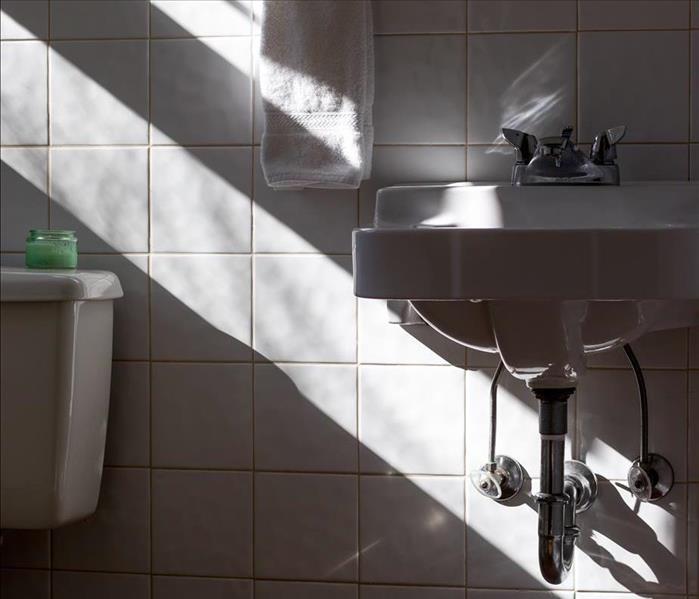 Set up your inspection and mold damage assessment by calling us at (717) 510-6779. Our mold remediation specialists will provide expert, reliable help
Set up your inspection and mold damage assessment by calling us at (717) 510-6779. Our mold remediation specialists will provide expert, reliable help
Habitually filled with moisture and humidity, it’s no wonder mold is so drawn to bathrooms. These two characteristics present prime conditions for mold growth. Mold can grow exponentially in as few as 24 hours in optimal conditions, which can bring about major damage. Because mold infestations can negatively affect not only the safety of your bathroom, but the health of those in your home as well, taking preventative measures against mold growth is critical. The first step is to develop an understanding of how and why mold grows in bathrooms.
Understanding the Causes of Bathroom Mold Growth
Lack of ventilation is one of the top reasons as to why mold can grow so easily in bathrooms. After taking a bath or shower, moisture has a habit of lingering on walls and other surfaces. Mold growth is facilitated if that moisture sits idly and isn’t dried. Additionally, fabric materials in the bathroom, such as bath rugs and towels, can become damp after a bath or shower, which increases the chances of mold growing on those surfaces. Finally, leaking plumbing, sinks, and toilets can cause moisture to accumulate in isolated areas, risking mold growth.
How to Prevent Mold Growth
Due to bathrooms’ constant exposure to water, eliminating moisture altogether is unreasonable. However, there are various ways in which you can reduce the chances of mold growth in your bathroom. Get into the habit of turning on your bathroom fan for a minimum of 30 minutes after every bath or shower in order to increase ventilation. It is also important that humidity levels in the home stay below 45% in an effort to reduce humidity in your bathroom. Bath towels, rugs, and other fabrics can be washed frequently to combat the risk of mold growth. Regularly check plumbing for leaks so that if a leak forms, you can bring it to a halt before it can do any serious damage. In an effort to prevent moisture from lingering after a bath or shower, consider using a squeegee to remove the moisture from shower walls.
What to Do If You Spot Mold Growth
Because mold commonly grows in dark, isolated, and hidden spots like corners and in between tile, it can sometimes be difficult to catch. In the event that you discover mold growth in your bathroom, it is imperative that you don’t touch the mold. Coming into contact with mold can cause health effects. Attempting to clean the mold or dry it out may seem like helpful steps, but they can actually cause mold spores to travel to other areas of the bathroom, increasing the severity of the mold problem. While all of this may seem scary, it’s important to remember that you don’t have to face your mold problem on your own. SERVPRO is here to help. Set up your inspection and mold damage assessment by calling us at (717) 510-6779. Our mold remediation specialists will provide expert, reliable help immediately so that your bathroom can return to a safe and clean condition as soon as possible. Visit https://www.SERVPROharrisburgwest.com/mold-remediation to learn more about our mold remediation services.
Deal with A Leaky Dishwasher
4/27/2020 (Permalink)

We use dishwashers practically every day in order to ensure that our silverware, cups, and dishes are clean. Because dishwashers are used so frequently, there is a greater risk for the formation of a leak and even flooding. Your kitchen and its surrounding areas can experience serious water damage if the leak or flooding from the dishwasher is significant. At first glance, a small leak may not seem capable of instigating major water damage, but a series of small leaks or a recurring leak can cause a large quantity of water to accumulate over time, thus resulting in larger-scale water damage. It is important to understand the common causes of dishwasher leaks and floods, as well as methods of effective cleaning in order to protect your home from extensive water damage.
Causes
There are many reasons as to why dishwashers can leak or flood, but there are three common causes with which it is beneficial to be familiar. Damage to a dishwasher door, such as a bent door latch or an improperly latched door, is the first of three common causes of dishwasher leaks. Dishwasher door damage is most likely the culprit of your leak if you observe a leak directly beneath the dishwasher door. The use of an improper dishwasher detergent is a second common cause of dishwasher leaks. Standard dish soap may appear to be an acceptable alternative to dishwasher detergent, but dish soap is not appropriate for dishwashers, as it produces an excess of foam and suds. Those suds push water against the dishwasher door, which apply pressure to the dishwasher door and can result in water leaking out of the unit. Dishwasher units can malfunction on occasion and take in more water than they should, which serves as a third common cause of dishwasher leaks. When dishwashers overfill with water, the unit may have trouble draining properly, thus increasing the likelihood of water leaking or flooding from the unit.
Cleaning Up
In order to prevent more water from escaping the unit, water must be shut off before the cleanup process begins. Because water and electricity are not a safe combination, it is extremely important to also shut off electricity if your dishwasher unit is located near electrical outlets or other electrical appliances. Following this step, the next order of business is to, through the use of a mop or towels, remove as much standing water as possible. If there is still water flowing from the unit, it may be beneficial to create a barrier using towels. The leak or flood water may have reached surrounding areas of your kitchen, such as cabinets, nearby furniture, or pantries, so it is important to check those areas for water damage. If they have undergone such damage, remove items within cabinets or pantries and clear out damaged furniture from the area. A wet-dry vacuum can be used to eliminate any additional standing water. After this has been completed, it is important to dry and disinfect the surfaces that have been impacted by the dishwasher leak or flood in order to protect against the growth of mold or mildew, which can lead to further damage. Mold thrives in moisture and humidity, so it is a good idea to open windows as a means of maintaining air circulation and utilize a dehumidifier to sustain low levels of humidity inside of your home.
Need Additional Help?
Dishwasher leaks and floods can be overwhelming. SERVPRO’s trained water damage specialists and advanced drying equipment are just a call away and ready to help remediate the areas of your home that have experienced water damage as a result of a dishwasher leak or flood.
Spring Mold Prevention
4/10/2020 (Permalink)
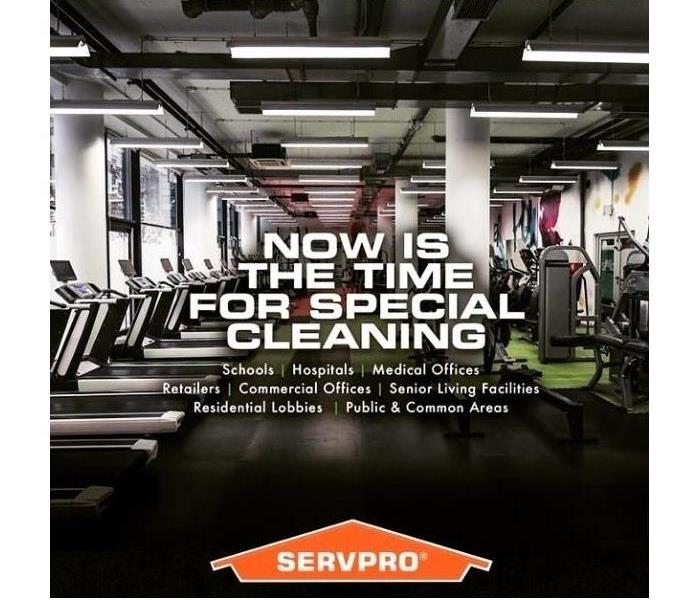 If not handled properly, mold has a better chance to regrow, or even spread.
If not handled properly, mold has a better chance to regrow, or even spread.
Springtime is in full swing, with flowers blossoming, birds singing, and temperatures getting a little warmer. This change in direction towards more pleasant weather drives us to open windows and let in the fresh air. While this may seem appealing, doing so can actually increase the chances of mold growing in your home.
What Should I Look For?
Mold can grow at any time during the year, but during the spring, warmer and more humid spring air enters the home, which creates the perfect conditions for mold growth when combined with moisture on any surface, including wood, carpet, and insulation among others. This spring, protect your home and those living in it by understanding effective preventative measures that you can take to stop mold from growing in your home.
First and foremost, it is crucial to keep air circulating throughout the home during the spring in order to reduce humidity and prevent mold growth. Fans can be incredibly helpful in maintaining air flow and dehumidifiers are effective in decreasing humidity levels within the home. Humidity levels in the home should not exceed 45%. Some areas of the home that are habitually cold and dark are particularly susceptible to mold growth, so it may be beneficial to pay close attention to these areas and do your best to bring in natural or artificial light in order to help prevent mold growth.
Rain showers and storms are prevalent during the springtime, which can lead to the growth of mold on areas surrounding windows and doors of your home.
How Do I Handle Mold Growth?
In order to prevent mold growth in these areas, be sure to frequently check surfaces surrounding doors and windows, including walls, floors, and windowsills. If moisture from rain or storms accumulates on these areas, it is important that they are dried quickly and thoroughly. Moisture can also accumulate in these areas due to condensation on windows and doors, which occurs frequently throughout the spring with differing temperatures indoors and outdoors. When met with humidity, mold can grow quickly in these areas.
If you see mold growing on a surface in your home, it is important to scrub the area diligently using detergent and water. Thoroughly drying the surface afterward is equally important, because if there is still moisture left in the area, you run the risk of mold growing on the surface once more. Usually, isolated and small-scale mold growth is manageable.
If Mold Is Unmanageable -- Call A Pro
However, larger-scale mold infestations can become overwhelming and require the assistance of professionals. Call SERVPRO’s mold remediation specialists to effectively inspect, assess, and remediate your home’s mold situation.
Understanding Ceiling Stains
9/30/2019 (Permalink)
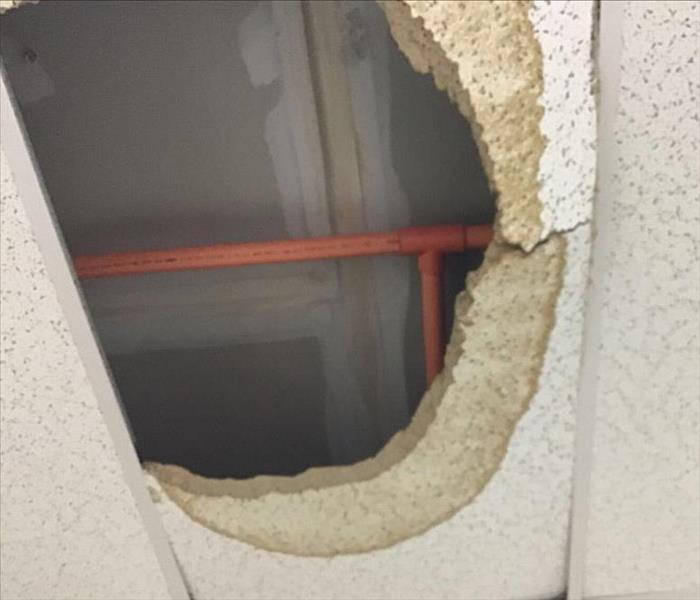 A water stain on your ceiling could be caused by a leaky pipe.
A water stain on your ceiling could be caused by a leaky pipe.
An unwanted yellow ring or streak of discolored substance is undoubtedly one of the worst discoveries to make when glancing up at the ceiling in passing. The visible markings of a water leak, these stains indicate water damage in your ceiling, which can not be expunged with a new coat of paint or averting your eyes from the stain. Ignorance will only cause the problem to grow, facilitating the growth of mold and mildew. Therefore, it is crucial that the damaged area of the ceiling is quickly remedied. However, before taking action, it may be beneficial to understand the common causes of ceiling water stains.
Common Causes
With a solid understanding of the common causes of these stains, the root of your ceiling’s stain can be determined, which can help identify the best course of action to take. Ceiling water stains are primarily formed from three scenarios: clogged gutters, caulking issues, and leaky pipes. If a heavy rainstorm has recently occurred, clogged gutters may be the cause of your ceiling’s water stain. When gutters overflow, rain water can seep into your home and stain ceilings. If the ceiling stain appears soon after a shower or bath was taken in your home, the stain may be due to a caulking issue. Old caulking is prone to cracking and deteriorating, which can lead to leaks when water escapes a shower or bathtub. Finally, water can leak from pipes that run throughout your home. If a dishwasher, bathtub, refrigerator, or even an air conditioner are situated directly above the stain on the next floor up, your ceiling stain may have been caused by leaky pipes. Take a moment to recall the last time someone took a shower or bath, last week’s heavy rainstorm, and the last time you ran the dishwasher. Your leak may have been connected to one of those situations.
Taking Action vs Calling a Professional
Drilling into your ceiling in order to verify the source of the leak can be a daunting task for many homeowners. If you have any hesitation, calling a professional may be the right call. With the tools, knowledge, and experience, a professional can remedy the water stain quickly and effectively.
Why Is My Air Conditioner Leaking?
8/23/2019 (Permalink)
As we near the end of August and begin the transition into fall, summer temperatures will remain for a while longer, pressuring our air conditioners to continue relieving us from the heat. The chances of your air conditioning unit leaking are increased with constant use. While a small leak may seem manageable and not immediately concerning, it can grow into a much larger issue, resulting in serious amounts of water damage if your faulty AC unit isn't repaired quickly. Without repairs, you run the risk of mold or bacteria growth and caved-in ceilings as well as other types of structural damage to walls and floors. Being able to understand the problems that lead to leaky air conditioners, such as clogged drain lines, improper installation, and frozen evaporator coils, will help you to identify the reason why your unit is leaking and how to resolve the issue.
An air conditioning unit's drain line clogs when debris, dirt, or rust accumulates within the drain line, creating a blockage that results in the drain pan overflowing. Leaking onto the pan's surroundings, objects such as carpets, floors, walls, and ceilings can be damaged. Suppose your home's AC unit was installed recently and a leak emerges. This is a common result of improper installation. When the drain line isn't secured tightly, the pipe can loosen and eventually separate from the unit, causing a leak. If your unit was not recently installed and its drain line is not blocked, your unit's air filter may be to blame. The longer an air conditioner is used, the greater the possibility of the filter filling with dirt, clogging the filter. When the filter clogs, ice forms inside of the evaporator coils and when that ice melts, the unit can leak. Replace your air filter on a regular basis in order to prevent the filter from clogging.
While you can take every preventative measure to prevent your air conditioning unit from leaking, there is always a chance that your unit could leak. In that case, turn off your AC unit and call a professional immediately after you discover a leak. Automatically shutting off the AC unit when its air filter or drain line clogs, a float switch can be installed by a professional to provide additional protection.
What to Do When Your Washing Machine Floods
7/15/2019 (Permalink)
Suppose you enter your laundry room one day to find that the floor is covered in water from your washing machine. As horrific as this hypothetical situation may be, it is important to recognize that washing machines can and most likely will flood at some point in time, so knowing how to manage the flooding is absolutely necessary. Hoses as well as seals located inside of the washing machine are usually to blame when a washing machine breaks and floods. When this occurs, flood water can spread to surrounding carpets and walls, which can easily be damaged by the water if it is not removed quickly.
Turn off the water and unplug the washer immediately after you discover that the washing machine is flooding in order to stifle the flow of water and prevent the water and electricity from reacting with one another while cleaning up. Before you begin cleaning, take any clothes that were inside of the washing machine when it began to flood out of the washer. Use towels, a mop, or a wet water vacuum depending on what you have available in order to eliminate any water. Dry the affected area using fans or dehumidifiers and if the weather is mild and dry. If carpets or drywall were destroyed by water damage during the flood, replace these items with fresh carpet and drywall. Disinfect the affected area before you return to regular use of the washing machine.
In order to ensure that you don’t discover a broken washing machine in your laundry room once more, avoid pouring too much detergent into the washing machine. Using an unnecessarily large amount of detergent for a load of laundry can result in the formation of an excessive amount of suds that can overflow and cause the washing machine to flood. If you notice any signs of corrosion on the washing machine’s hoses, be cautious when running loads of laundry until they can be replaced or repaired, as the machine can flood of the hoses break. Finally, monitor the state of the washing machine’s drain line because if the drain clogs, the risk of the machine to flood will be enhanced.
What Causes Pipes to Leak?
7/8/2019 (Permalink)
Water damage can occur as a result of flooding in homes. But what causes that flooding? A common origin is pipes that leak. Water damage can be destructive, so it is beneficial to be able to understand the reasons as to why pipes leak.
Eating away at pipes, corrosion can cause pipes to rust, break, and therefore leak. Make sure to watch for discolored water coming from the pipes and deformed pipes, since these can indicate corrosion. Any rusting on the pipe itself as well as other visible signs of corrosion can also imply this type of damage. Avoid pipe corrosion by surveying the condition of pipes before buying a home in order to make sure that they are in good shape. You can also have the pH of your water tested by professionals and make an effort to stop leakage using satisfactory clamps until professionals can sufficiently fix the damaged pipes.
To bind water connectors, seals are adhered to the pipes when installed. With age and usage, the seals can break and therefore cause flooding. If you see any puddles of water forming on the ground beneath a seal or condensation on the outside of the pipes, the seals have likely been damaged. In order to protect seals from this damage, be sure to run water through your pipes regularly so that the don’t dry out and keep your eyes peeled for any of the aforementioned indicators of damage. If you don’t run water through the pipes regularly, the dried pipes can cause seals to crack and eventually break. Ask a friend or neighbor to run the water in your home in the event that you must leave town for a prolonged period of time, as doing so will protect the pipes and seals from damage.
Causing pipes to contract and expand, extreme changes in temperature can cause pressure buildups in pipes. This increased pressure results in pipes rupturing and leaking in response. Pay close attention to the price of your water bill, as leakage can skyrocket the price. While it may sound odd, monitoring the smell your drains can also be beneficial, as a musty smell emanating from the drain can signify leaky pipes. Finally, if you notice any sudden changes in water pressure or flow, it may also be pointing to leaky pipes. Open cabinet doors, allow warmth to reach the pipes, and keep water flowing through the pipes in order to prevent your pipes from freezing during the cold months. Setting your thermostat to a certain, fixed temperature may also prove to maintain the good condition of your pipes.
Preventing Water Damage To Carpets
7/1/2019 (Permalink)
Preventing Water Damage To Carpets
How Can Carpets Be Damaged by Water?
Water damage to carpets is most commonly the result of plumbing issues such as leaky pipes and weather effects such as flooding or leaking after the buildup of water in areas that store water during storms such as attics or basements.
Warning Signs
Discoloration of the carpet is a visible sign of water damage. However, water damage can impact carpet without visible indicators. For example, another common sign of water damage is a putrid, musty odor that will not vanish after cleaning. Illness of those living in the house as well as amplified allergy symptoms may also signify the presence of water damage to carpets in a home.
Why You Should Act Quickly
Mold and mildew will grow in the damaged carpet the longer it remains untreated. In this case, the carpet will need to be completely removed, as mold and mildew cannot be destroyed through simple cleaning. The carpet padding and subfloor underneath the carpet can also be damaged if the area is not hastily cleaned. Finally, mold and mildew can cause detrimental effects to the health of those living in the home, as they can infiltrate the home’s ventilation system.
Precautions to Take
Any moisture in the carpet will need to be removed using a wet water vacuum. Surrounding furniture should also be checked to ensure that they have not also been contaminated. To prevent further mold growth, it may also be beneficial to scrub other carpets and walls in the room that was affected. Dry out the room and create better ventilation by opening windows and utilizing fans or a dehumidifier. To treat a specific area, sprinkle baking soda on top of the area and vacuum. Steam-cleaning the area will also help to destroy dead mold spores. When in doubt, call SERVPRO to guarantee a thorough and sufficient elimination of water damage in your carpet.
Why Did My Basement Flood?
4/3/2019 (Permalink)
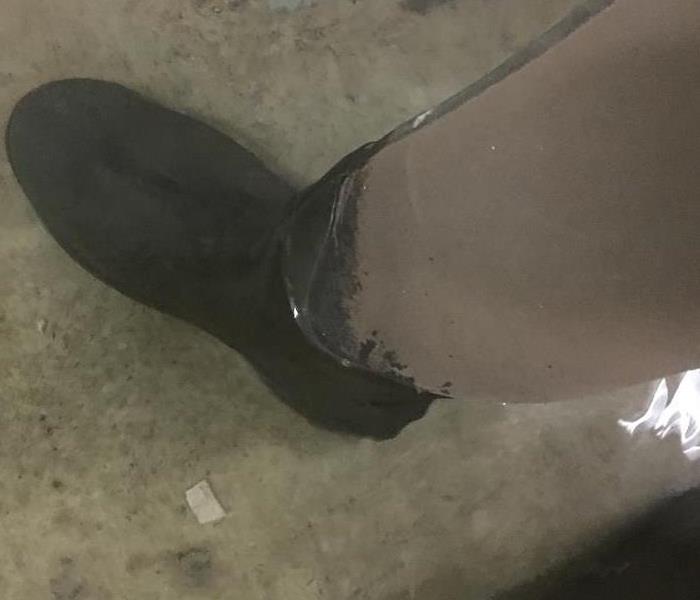 Water will find the least path of resistance and it could be into your basement. Be prepared and know how to prevent a flooded home!
Water will find the least path of resistance and it could be into your basement. Be prepared and know how to prevent a flooded home!
Why Did My Basement Flood?
Flooding of basements is one of the most common issues most homeowners face. Although flooding occurs during heavy rains or rapid snowmelts, it can also occur in dry weather.
There are many reasons for basement flooding including seepage, storm sewer backup, and improper grading among others. As the basement lies in the lowest level of a building, it is prone to flooding.
What causes basement flooding?
These are the most common causes of basement flooding:
Foundation Leaks: Water can seep into the foundation if there are cracks in it. The risk of flood in your foundation is more if your home is near groundwater. Cracks in the foundation can lead to significant water leakage into the basement.
Leaking basement windows: Windows in the basement can leak and let water creep in during rains. Whenever it rains, there could be a significant collection of water on the windowsills. Fixing the windowsill is the only option to prevent basement flooding.
Blocked sewer: If the manifold that connects the public sewer system to your house is blocked it can lead to floods in your basement. It is important to call local authorities immediately to address blocked gutters and SERVPRO of New Cumberland/Carlisle to mitigate the sewage and water damage.
Debris in gutters: The gutters play a critical role in preventing basement flooding as they carry away rain water from the home. If they are clogged or damaged, they can overflow during rains and allow water to build up. If the ground near the basement soaks up too much water, it can seep into the basement as well.
Improper grading or sloping: If the yard does not slope away in the right manner, rain water does not drain effectively. If the sloping is towards your home rather than away, excess water can result in basement flooding.
Improper downspouts: Downspouts channel water away from the foundation and should be at least 5 to 6 feet away from the wall of the basement. If the downspouts are missing or broken, water tends to pool near the house and slowly seeps into the basement.
SERVPRO of New Cumberland/Carlisle provides professional emergency clean up and restoration services on a 24/7 basis. Should you encounter water or sewage damage call our office directly at 717-761-2173.
When Does Insurance Cover Mold Remediation?
2/15/2019 (Permalink)
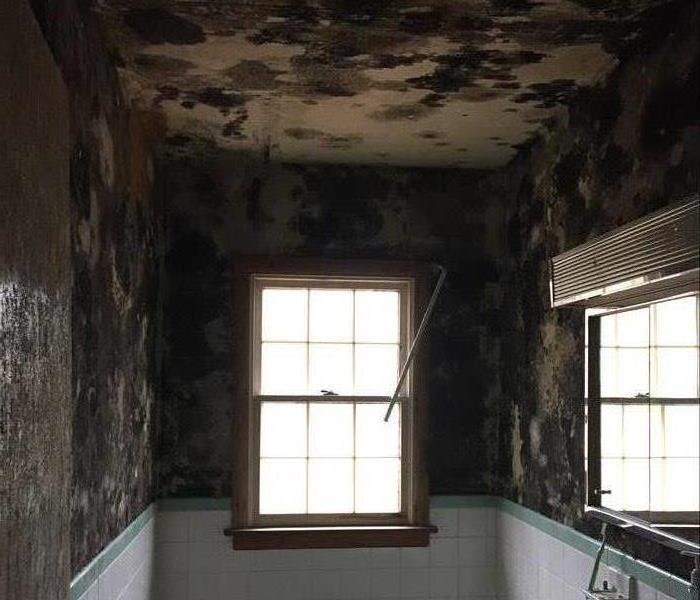 Water Damage that goes unaddressed can lead to a much bigger and more costly situation!
Water Damage that goes unaddressed can lead to a much bigger and more costly situation!
When Insurance Will and Won’t Cover Mold Remediation
One of the unwelcome consequences of water damage, dampness or humidity is mold overgrowth. The costs of mold-related diseases are as high as $22.4 billion annually in the U.S. alone as per the Journal of Environmental and Public Health.
Mold is a fungus that occurs naturally and is not visible to the naked eye. Reproducing with the help of spores, mold can infiltrate buildings easily. Mold insurance is an absolute must for homeowners given the high cost of repair and maintenance of buildings that have been damaged by mold.
What does insurance cover mold remediation?
Homeowners insurance typically covers mold damage only when a "covered peril" causes it. The “covered perils” for which mold remediation is covered by insurance companies include:
- Fire
- Vandalism
- Theft
- Malicious mischief
- Lightning
- Damage due to vehicles
- Falling objects
- Weight of snow, ice, or sleet
- Frozen pipes
- Accidental water overflow from heating, plumbing, sprinkler systems, air conditioners, and household appliances
When does insurance not cover mold remediation?
Home insurance policies do not cover mold remediation if it resulted from preventable causes such as flood, water damage, or high humidity. Homeowners are expected to take preventive measures to avoid mold damage that includes professional cleaning, drying, and regular maintenance.
Standard homeowners’ policies will not provide mold remediation cover for “maintenance” problems such as repeated water leaks, continuous water seepage, humidity problems, and ongoing issues related to condensation, landscaping or drainage. Most homeowners’ policies also do not cover flood damage which is usually provided as a separate add-on.
Addressing water damage at it's onset with the help of professionals at SERVPRO of New Cumberland/Carlisle is the ideal way to prevent the costly expense of mold remediation.
 Having a clear idea of what to look for on the interior and exterior of your commercial property’s roof can help prevent further water damage.
Having a clear idea of what to look for on the interior and exterior of your commercial property’s roof can help prevent further water damage.





 24/7 Emergency Service
24/7 Emergency Service










